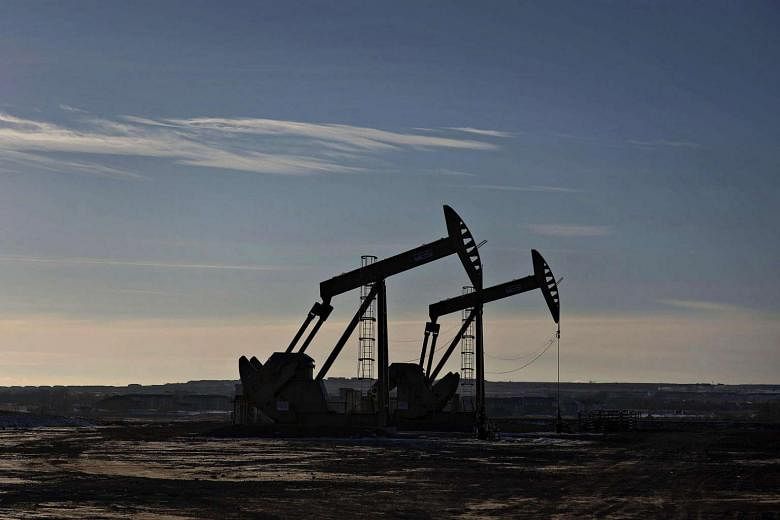LONDON (BLOOMBERG) - On the surface, the recovery of the global oil market is firmly in place, signaling an end to two years of oversupply and collapsing prices. However, one key indicator is warning of turbulence ahead.
Crude's rally stalled near US$50 a barrel in the past month and the one-year price contango - where near-term deliveries are cheaper than those a year ahead - has almost doubled. That's a signal that demand from refiners could be weakening. When the same thing happened last summer, a fragile oil rebound gave way to a renewed rout.
"The market is in the process of rebalancing, but the overhang has not been wiped out yet," said Amrita Sen, chief oil analyst at consultants Energy Aspects Ltd. in London. "This will undoubtedly be messy, with the market moving too far in one direction before correcting."
From Saudi Arabia to the International Energy Agency, the biggest names in the oil industry agree that that the pressure of low prices is finally whittling away a global production surplus. That's not to say the world is on a steady trajectory to tighter supplies and higher prices. From one quarter to the next, the market will swing from surplus to deficit due to seasonal trends in supply and demand, according to estimates from Goldman Sachs Group Inc.
The current widening of the contango reflects subdued seasonal demand and concerns over the economic impact of the UK's vote to leave the European Union.
"Contango means you have an oversupplied market," said Bob Yawger, director of the futures division at Mizuho Securities USA in New York. "The global numbers, outside of US production, point to an oversupplied situation worldwide."
Brent futures for September settlement, the first active month on the ICE Futures Europe exchange, traded at US$46.59 a barrel at 3:43 pm in London on Monday (July 11). That was US$5.49 less than contracts for September 2017, the widest gap since March and more than double the level a month ago. When the contango expanded about 40 per cent in June 2015, a price recovery that had taken shape in the first half of the year sputtered out and futures plunged again, reaching a 12-year low six months later.
The contango shrank in the first half of this year due to halts to output caused by pipeline attacks in Nigeria and wildfires in Canada, Michael Cohen, an analyst at Barclays, said in a Bloomberg television interview. As those disruptions ease and the demand outlook worsens following the UK's so- called Brexit vote, the market's focus has turned back to brimming inventory levels, Cohen said.
Even after they fell for eight of the past nine weeks, crude stockpiles in the US still total 524 million barrels, more than 100 million barrels above the five-year average.
"We have a lot of oil in the system and it will take us considerable time to work that off," Ian Taylor, chief executive officer of Vitol Group, the biggest independent oil trader, told Bloomberg Television in an interview. "I cannot see the market really roaring ahead."
A widening contango can be good news for oil traders. It allows them to buy crude cheaply, store it in tanks and lock in profit for later sales using derivatives contracts. Firms such as Vitol and Trafigura Group Pte thrived last year as Brent's one-year contango reached more than US$12 a barrel.
The current spread isn't wide enough to make stockpiling crude on ocean-going tankers profitable, Vitol's Taylor said. Any use of ships for storage now is probably out of necessity amid unloading delays at some ports, he said.
Despite the renewed contango, analysts agree the market's longer-term return to equilibrium remains intact. Demand and supply will essentially be aligned in 2017, ending three years of overproduction, according to the Paris-based IEA, an adviser to industrialized nations.
There's still scope for volatility in the IEA forecasts. A small shortage in the third quarter will be followed by a surplus in the fourth, with a further period of excess in the first half of 2017, succeeded by a small accumulation of stockpiles in the second.
"We don't think the bottom will fall out of the market, but we do worry things will not tighten up that much more," said Jan Stuart, global energy economist at Credit Suisse Securities LLC in New York. "Rebalance, yes, but in a messy sort of way."

